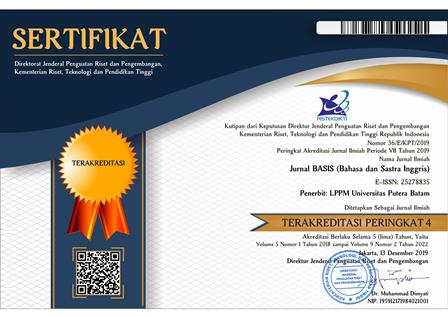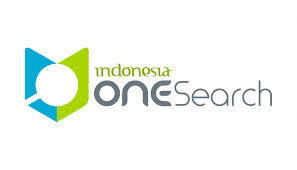AN ANALYSIS OF TEACHERS’ BELIEF IN TEACHING ENGLISH TO YOUNG LEARNERS
DOI:
https://doi.org/10.33884/basisupb.v9i1.4534Keywords:
English for Elementary School, Teachers’ Belief, Language AcquisitionAbstract
This study was aimed at revealing teachers' beliefs about teaching English at the elementary school level, especially the beliefs concerned with (1) whether or not teaching English at the elementary level was necessary and (2) the possibility of using a monolingual approach (full English) in teaching English at the elementary level. This study used a qualitative method in which the researcher interviewed 40 English teachers who taught at elementary schools in Jabodetabek (Jakarta, Bogor, Depok, Tangerang, Bekasi). The results of this study showed that in general, there was a need to teach English starting from the first grade of elementary level. Respondents believed that the earlier students were introduced to English, the better the results would be, considering the fact that first-grade students were still inside the golden age period. However, in order not to burden students, teachers must pay attention to the students’ abilities and characteristics. Moreover, respondents also believed that implementing monolingual (full-English) in classroom teachings was possible. To have successful monolingual teachings, it was recommended that classroom teachings resemble the process of first language acquisition. Furthermore, teachers should pay attention to the linguistic input they gave to students in such a way that it met the formulation of i+1. Finally, a fun learning atmosphere that is free from fear or stressful situation also played an important role in the successful implementation of this monolingual approach.
References
Bateman, B. E. (2008). Student teachers' attitudes and beliefs about using the target language in the classroom. Foreign Language Annals, 41(1), 11-28.
cook, M., et al. (2010). Teachers’ beliefs on foreign language teaching practices in early phases of primary education: a case study. Turkish Online Journal of Qualitative Inquiry, 1(1), 62-76.
Cook, V. (2008). Second Language Learning and Language Teaching (4th ed). London: Hodder Education.
Creswell, J. W. (2007). Qualitative inquiry and research design: Choosing among five approaches. Thousand Oak, California: Sage Publication, Inc.
Damar, E. A., Gürsoy, E., & Korkmaz Ç., Ş. (2013). Teaching English to Young Learners: Through the Eyes of EFL Teacher Trainers. International Association of Research in Foreign Language Education and Applied Linguistics, 2(3), 95-110.
Duff, P.A. & Polio, C.G. (1990). How Much Foreign Language Is There in the Foreign Language Classroom?. The Modern Language Journal, 74 (2).
Ellis, R. (1986). Understanding Second Language Acquisition. Oxford: Oxford University Press.
Fives, H. & Gill, M.G. (2015). International Handbook of Research on Teachers’ Beliefs. New York: Routledge.
Freeman, D., & Johnson, K. E. (1998). Reconceptualizing the knowledge-base of language teacher education. TESOL Quarterly, 32 (3), 397-417.
Garcia, A. L. (2007). Young learners’ functional use of the L2 in a low-immersion EFL context. ELT Journal, 61 (1), 39-45.
Garton, S., Copland, F., & Burns, A. (2011). Investigating Global Practices in Teaching English to Young Learners. Birmingham: Aston University.
Harmer, J. (2007). The Practice of English Language Teaching - Fourth Edition.
London: Pearson Longman.
Hawanti, S. (2014). Implementing Indonesia’s English Language Teaching Policy in Primary Schools: the Role of Teachers’ Knowledge and Beliefs. International Journal of Pedagogies and Learning, 9(2), 162-170.
Johnson, K. E. (1994). The emerging beliefs and instructional practices of preservice
English as a second language teachers. Teaching & Teacher Education, 10 (4): 439-452.
Kagan, D. M. (1992). Implications of Research on Teacher Belief. Educational
Psychologist, 27 (1), 65-90.
Krashen, S. (1981). Second Language Acquisition and Second Language Learning.
California: Pergamon Press Inc.
Lenneberg, E. H. (1967). Biological Foundations of Language. New York: John Wiley
& Sons, Inc.
Moleong, L. J. (2017). Metodologi Penelitian Kualitatif. Bandung: PT. Remaja
Rosdakarya.
Prasetiawan, A.Y. (2019). Perkembangan Golden Age dalam Perspektif Pendidikan
Islam. Terampil Jurnal Pendidikan dan Pembelajaran Dasar, 6(1), 100-114.
Richards, Jack C. & Rodgers, Theodore S. (1986). Approaches and Methods in
Language Teaching. New York: Cambridge University Press.
Sadtono, E. (2007). A Concise History of TEFL In Indonesia. English Education In Asia: History And Policies, 205-234.
Suyanto, K.K.E. (2010). English for Young Learners. Jakarta: Bumi Aksara.
Tinsley, T., & Comfort, T.. (2012). Lessons from Abroad: International Review of Primary Languages. UK: CfBT Education Trust.
Zein, S. (2015). Factors Affecting the Professional Development of Elementary English Teachers. Professional Development in Education, 42(3), 423-440.
Zein, S. (2016). Elementary English education in Indonesia: Policy developments, current practices, and future prospects: How has Indonesia coped with the demand for teaching English in schools?. Cambridge University Press, 33(1), 53-59.

















